Welcome to a special edition of Fifty Prospects in Fifty Days. For over a month, I have been delivering prospect analysis every other day, counting down the top 50 prospects in the Braves organization until we get inevitably to Ronald Acuna at #1.
Unfortunately, the results of the MLB investigation into the Braves violations of international signing rules resulted in 13 prospects being declared free agents, able to be signed by any team that wishes to use their own international pools to do so. Among those were four prospects that placed in the OFR Top 50 Braves prospect list: #33 Abrahan Gutierrez, #27 Yefri Del Rosario, #26 Yunior Severino, and the player who would have been #10 on the list, Kevin Maitan.
Because everyone likes round numbers, I am not going to have the Top 50 become a Top 46. Following are reports on the four players that initially ranked outside the Top 50 but now have gotten promoted due to the removal of the affected international signees. The list at the bottom of this post now has the most current numbering and will be used in posts going forward as the series continues on December 2 with prospects #10 and 11.
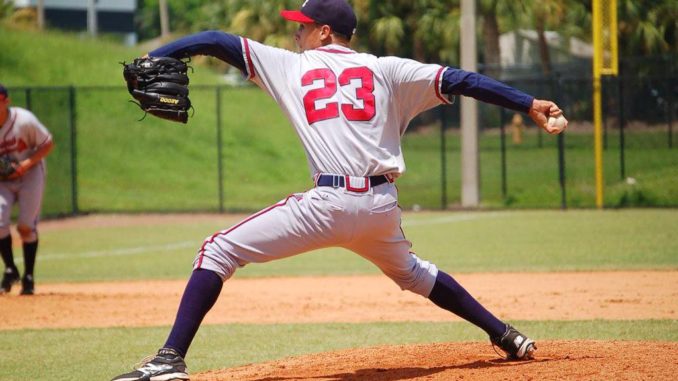
50. Alan Rangel, RHP
Age: 20 | Throws: R
4.71 ERA | 3.81 FIP | 15 G, 13 GS | 70.2 IP | 1.78 BB/9 | 6.11 K/9
Current Assignment: Class A Rome
Acquired: International Amateur Free Agent – 2015
Midseason 2017 OFR Ranking: N/A
History: Rangel was a low-key international signing in the 2014/15 class. He has made steady progress in the system after being overmatched in his age 17 season in the GCL. After repeating the GCL in 2016 and pitching to a 3.28 ERA/2.77 FIP, Rangel was called up to Rome in early June initially to back-fill the rotation after some starters went on the DL. Later in the year he worked as a swingman, alternating between long relief and starting. Rangel was a deep cut invitation to the Braves prospect pitching camp in early November.
Pitching: In what will be a theme for the four pitchers highlighted in this post, Rangel doesn’t throw particularly hard but has superb control of his low-90s fastball. Rangel’s bread-and-butter pitch however is his curveball, which he leans on heavily, throwing it on any count against batters on either side of the plate. He generally drops it in for strikes as well, forcing hitters to go after it. When he’s on, hitters will tap it into the infield; when he’s off they’ll wait on a curveball up in the zone and drive it, and hitters managed to go .299/.336/.453 against Rangel in Rome. Rangel also has a change-up that is under development and occasionally looks like an effective weapon, though it could do with better separation in velocity from his fastball.
What’s Next: While only 20 years and and having skipped Danville, Rangel probably could use some more fine-tuning in Rome, but there’s just as much of a chance that he gets moved up to low-A Florida. In either spot, Rangel will need to work on turning his curveball into a true swing-and-miss pitch; it certainly has that potential. The progression of the change-up will likely determine if his future is in the rotation or the bullpen.

49. Caleb Dirks, RHP
Age: 24 | Throws: R
4.02 ERA | 4.23 FIP | 27 G, 0 GS | 40.1 IP | 2.90 BB/9 | 10.04 K/9
Current Assignment: Class AAA Gwinnett
Acquired: Trade w/Los Angeles Dodgers – 2016
Midseason 2017 OFR Ranking: 46
History: Dirks was drafted by the Braves in the 15th round of the 2014 draft, then traded the following year to the Dodgers for an international bonus pool. The Braves liked him so much that they traded for him back the following year in the Bud Norris deal. Dirks made his AAA debut in 2017 and had a 3.06 ERA and a .202/.277/.298 batting line against him when he went on the DL for a month in mid-June. He returned in mid-July for four more outings but clearly something wasn’t right; he gave up 8 runs in 5 innings, and was put back on the DL for the rest of the season.
Pitching: Dirks’s stuff won’t wow anyone, but his mechanics are consistent and he gives hitters a similar look no matter if he’s throwing his fastball, slider, or change-up. Dirks has a long but quick stride with a high kick that plays up his fastball, which sits at around 93 mph. This allows for good deception with his pitches, and he relies on fooling batters into chasing. If he’s not hitting his spots and hitters can lay off the pitches off the plate, he can get into trouble. The change-up is his best out-pitch, and he throws with with good command and movement. Dirks is athletic on the mound and is a capable defender, especially for a relief pitcher.
What’s Next: The Braves left Dirks off the 40-man roster and he’s eligible to be selected in the Rule V draft. If there’s a rebuilding team that thinks he can contribute, he’s a good candidate to be selected and stashed. If he’s not selected, Dirks will likely head back to AAA Gwinnett, and if he shows he’s healthy he could be in line for a call-up in 2018.
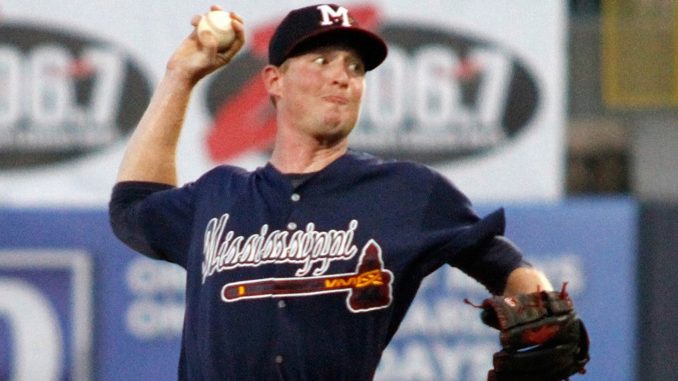
48. Wes Parsons, RHP
Age: 25 | Throws: R
3.15 ERA | 2.99 FIP | 30 G, 11 GS | 111.1 IP | 3.15 BB/9 | 8.73 K/9
Current Assignment: Class AAA Gwinnett
Acquired: Minor League Free Agent – 2012
Midseason 2017 OFR Ranking: N/A
History: The Braves signed Parsons as an undrafted minor league free agent out of Jackson State. Parsons sparkled with Rome in 2013, struggled in high-A Carolina in 2014, then tore his UCL in 2015. Parsons spent most of 2016 on rehab assignments before returning to form at the end of the season. Parsons was exceptionally versatile in 2017, jumping from AA to AAA and back again as needed, and from the rotation to the bullpen and back again. He posted a 2.71 ERA in 103 innings at AA Mississippi, but struggled in 4 outings in Gwinnett.
Pitching: Like Dirks, Parsons isn’t going to light up any radar guns, and gets outs through deception and command. His fastball sits in the low ’90s with natural sink, but due to his long arms and frame (listed at 6′-5″, 204 pounds) and this low delivery point it likely feels faster to the hitter. He complements the fastball with an above average slider that he uses to get weak contact. Though-out his career, Parsons has gotten excellent results on balls in play, getting a well over 50% ground ball rate. Parsons is susceptible against left-handed hitters however; he throws a change-up to try to combat this, but it doesn’t have the movement that his other pitches have and lefties can usually handle it well.
What’s Next: With more extensive bullpen usage being the trend in baseball, relievers that can cover multiple innings effectively are getting more attention. Parsons fits that bill, and like Dirks he was left off the 40-man roster and is eligible for the Rule V draft. If he’s not selected, Parsons should start the season in AAA Gwinnett.
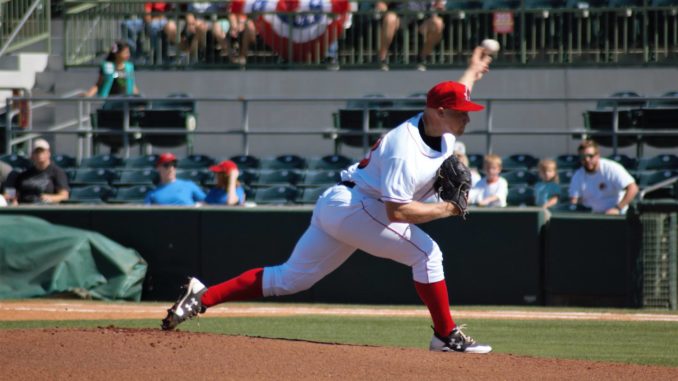
47. Drew Harrington, LHP
Age: 23 | Throws: L
4.50 ERA | 3.13 FIP | 15 G, 14 GS | 70.0 IP | 2.83 BB/9 | 7.07 K/9
Current Assignment: Class A+ Florida
Acquired: Draft, 3rd Round – 2016
Midseason 2017 OFR Ranking: 38
Superlatives: Florida State League All-Star
History: One of only three high-round college pitching draft picks in the Hart/Coppolella era (A.J. Minter and Kyle Wright are the others), Harrington won ACC Pitcher of the Year honors in 2016, leading Louisville into the NCAA Super Regionals. After working primarily as a reliever his first two years at Louisville, Harrington started 17 games his junior year (including in the playoffs) with a 1.95 ERA. After signing with the Braves, the organization was very careful with Harrington because of his collegiate workload, and was limited to only 14.2 innings with Danville.
Harrington was assigned to high-A Florida to start 2017, an understandable assignment given his age and experience. Harrington’s performance early in the season was very good, though his peripheral stats showed trouble below the surface; he was allowing a lot of baserunners, which ran up his pitch count, though he’s typically get out of trouble. In the second half, Harrington found it harder to pitch around trouble. His last start of the year was on July 2, after which he was put on the disabled list at exactly 70 innings on the season.
Pitching: Harrington is 6′-2″ and 225 pounds, and his motion and delivery is fairly upright, driving with his lower half to the plate and whipping the arm around. The arm action is somewhat deceptive as the fastball usually sits at only around 90-91, but it usually has good sink. Harrington has a slider and change-up that he also controls well and also throws low in the zone to induce weak contact, and Harrington’s near-60% groundball rate was superb. A lot of those grounders found holes however in the questionable Fire Frog infield defense. Harrington also showed a strong split, and right-handers hit .304/.354/.401 against him.
What’s Next: After Harrington’s abrupt exit from the active roster last year, it’s a bit uncertain how the organization sees Harrington. There’s certainly enough demonstrated to give him another shot in a rotation, either in AA or back in high-A to start again. On the other hand, there’s so many more pitchers with higher potential ceilings, it’s hard to see how Harrington fits in.

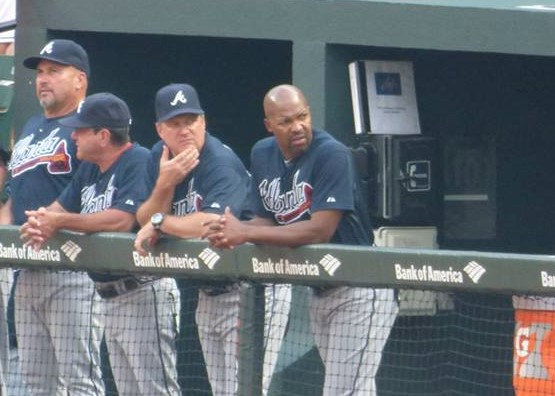

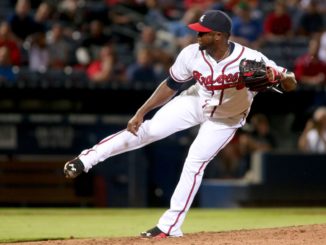
Leave a Reply